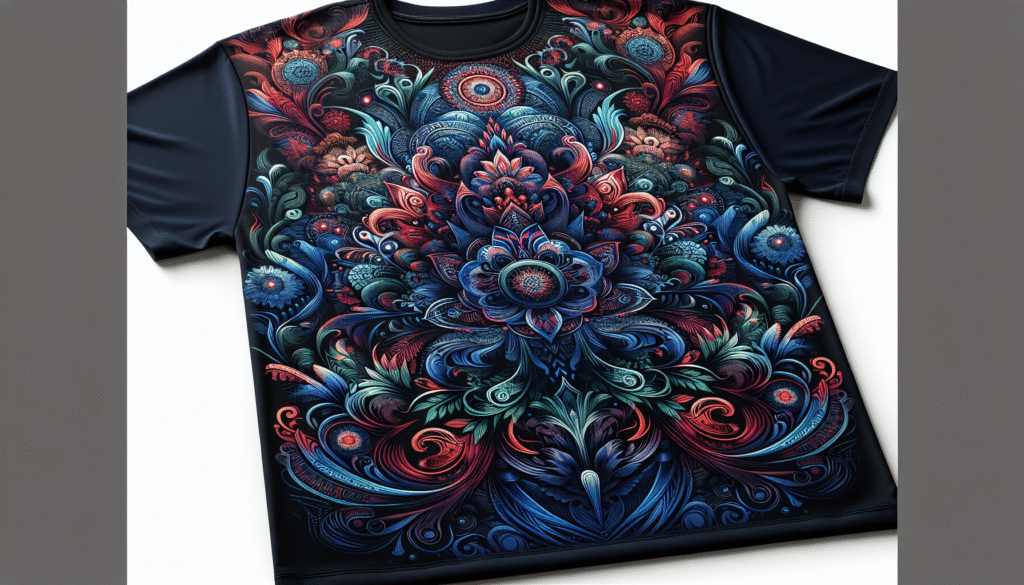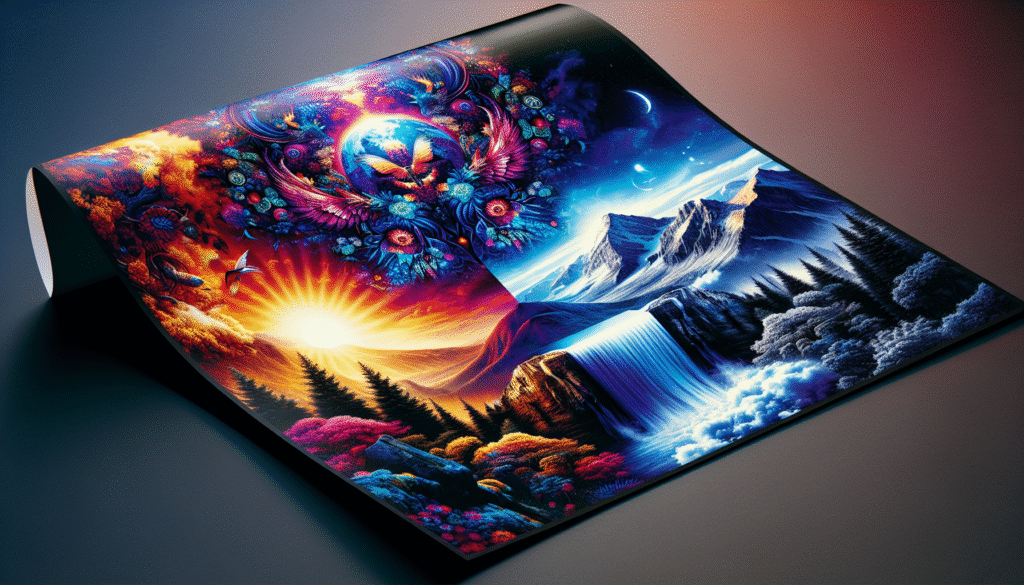What could possibly be more frustrating than an artwork that fades before it even has time to grace the world with its full, vibrant glory? As we journey together into the world of sublimation on dark fabrics, we find ourselves longing for permanence and vivid colors that stand the test of time. Together, let us navigate this terrain armed with patience, determination, and perhaps a sense of humor akin to that of the whimsical David Sedaris.

Understanding Sublimation
Before embarking on the nitty-gritty of sublimation on dark fabrics, we should familiarize ourselves with what sublimation itself entails. Sublimation is a printing method where we transfer dye onto a substrate using heat. The dye turns into gas when heated and bonds with the material, becoming part of the fabric or substrate itself. This process works wonders on polyester and other synthetic fabrics, allowing for long-lasting, vibrant designs.
However, this delicate dance between heat and pressure doesn’t transfer well to the stage when the backdrop is a dark fabric. But fear not! There’s a way to navigate these murky waters.
Why Dark Fabrics Present a Challenge
Picture this: a pristine white canvas absorbs color beautifully, while its darker cousin presents quite the challenge. The issue with sublimating on dark fabrics is comparable to attempting to paint a watercolor on a black wall. To get to a place where we can achieve vibrancy on dark fabrics, we need some strategies up our sleeves.
The Basic Tools of the Trade
Before diving head-first into technique, let us don our aprons and examine the essential tools in our sublimation toolkit. Each plays an indispensable role in ensuring that our artistic endeavors do not end in colorless debacles.
Sublimation Printer
At the heart of our venture lies the sublimation printer, a trusty companion that prints our designs using sublimation ink on transfer paper. Ensuring that we have a reliable printer not only aids in the craft itself but also saves us from unwarranted midnight disputes with stubborn technology.
Sublimation Ink and Transfer Paper
A match made in sublimation heaven, sublimation ink, and transfer paper work together to ensure that our designs are perfectly set for transfer. Opt for high-quality ink and paper formulations for vibrant and lasting results.
Heat Press
What would an entrée be without heat? Our heat press is the culinary equivalent of an oven, setting our designs ablaze with just the right amount of warmth. Be sure that the heat press in question allows for even heat distribution across its platens to avoid any patchy impressions.
Dark Fabric Sublimation Solutions
Here comes the cavalry! When attempting sublimation on dark fabrics, we rely heavily on two main players: sublimation markers and specialty papers. These champions allow us to bypass the limitations presented by traditional sublimation methods.

Techniques for Sublimating On Dark Fabrics
Finally, we reach the heart of our quest which seeks to conquer the sublimation on dark fabric dilemma. Follow along as we explore various techniques that promise vibrant results without the dreaded color fade.
The White Sublimation Layer Approach
To navigate the yawning abyss that is dark fabric sublimation, we first consider creating a white canvas atop our dark fabric. Here’s where specialty transfer papers designed for dark fabrics come into play. Here is a simple breakdown:
| Step | Action |
|---|---|
| 1 | Print your design using sublimation ink on a specialty transfer paper designed for dark fabrics. |
| 2 | Use a heat press to transfer the white base layer onto the fabric. This layer acts as our artificial white canvas. |
| 3 | Follow with another layer of heat press, this time applying the colorful design. The result? A vividly colored artwork on dark fabric. |
Using Subli-Flock or Vinyl
An alternative for those of us who enjoy a good texture is the subli-flock or vinyl approach. This method involves the following steps:
- Print your design on sublimation transfer paper using sublimation inks.
- Align your design onto subli-flock (a flock material that accepts sublimation inks) or heat transfer vinyl.
- Use a heat press to first bond the subli-flock to the fabric. Follow with a second press to transfer the design onto the flock.
This technique allows for vivid colors with an added plush, soft touch—perfect for when we want our designs not just seen but also felt in a more tactile sense.
Incorporating White Ink
In more sophisticated setups, white ink sublimation printers add an efficient option to our repertoire. These printers have an additional white ink channel and are adept at creating rich tones on dark fabrics.
We can print a white under-base on the dark material before printing a color layer on top. It might be a steeper investment, but it offers us a smoother process and, as a result, stunning designs.
Tips for Avoiding Color Fading
With an arsenal of techniques at our disposal, let’s consider a few additional tips to ensure that our designs do not fade into obscurity:
- Quality Over Quantity: Choose high-quality ink and paper brands. Sparing a bit more for quality ensures longevity.
- Heat that Meets, Not Beats: Maintain proper heat settings on your press. Excessive heat can damage both ink and fabric.
- Avoid Overcrowding: In designs, less can often be more. Sparse designs with bold contrasts often look more vibrant against darker backgrounds.
- Pre-treating Fabrics: A pre-sublimation wash can help remove any coating or fabric treatments that might repel dye sublimation inks.
- Proper Storage: Care for the garments. Encourage gentle wash routines and low heat drying to prolong the lifespan of the art.
The Emotional Journey of Craft
Who knew this journey into the tactile delights of sublimation could be so loaded with emotion and mystery? Our foray into the realm of dark fabrics has unwrapped a bundle of creativity, adventure, and a tad bit of chemistry. But more than all this technical exploration is an artistic journey where we connect and create. Like life’s many adventures, the lessons we glean go beyond the task at hand, offering us perspectives that resonate deep and fresh with rediscovery.
Conclusion: Celebrate the Spectrum
Our exploration comes full circle, leaving us richer for it. We’ve engaged deeply with traditional challenges in a new light, and in navigating the nuances of sublimation on dark fabrics, we’ve transcended. Let us return to our craft tables, completion in our souls, and art on our minds. Until our next artistic conquest, may our colors never fade and our creative spirits remain ignited.

